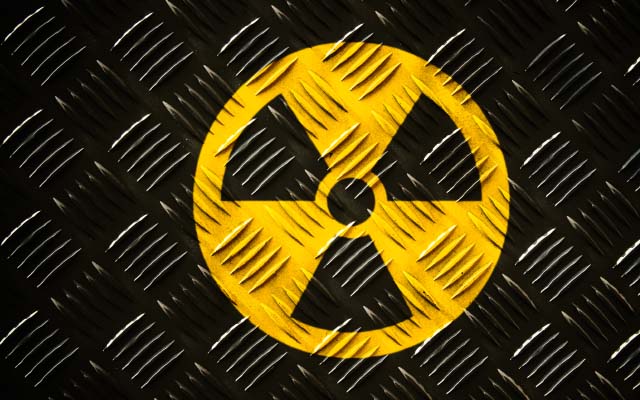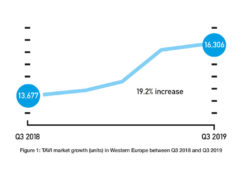
During a session on radiation protection technologies at the 2019 Transcatheter Cardiovascular Therapeutics (TCT) meeting (25–29 September, San Francisco, USA), Lloyd W Klein (Rush Medical College, Chicago, USA) said that Henry V led the heavily outnumbered English army to victory at the Battle of Agincourt (1415) because he “figured out how to use an old weapon in a new way”. He added that physicians needed to take a similar innovative approach to developing technologies for reducing radiation exposure.
He explained that, at the Battle of Agincourt: “The French had the best weapons, the best armour; they had the best everything. They [the English] were outnumbered seven to one. And yet, 7,000 French troops died during the battle vs. a few hundred English. How did Henry V do this?” According to Klein, the answer is not the “great motivational speech” that Shakespeare gave him (“probably the best speech ever written in the English language”) but Henry V’s innovative military tactics. “Henry figured out that the French’s armour could be used against them. So, he made them charge through a muddy field. And then to take further advantage, he figured out how to use an old weapon in a new way—the longbow [more than 80% of the English army had longbows]. The longbow made the heavy armour obsolete,” Klein said. He added that physicians were “now looking for our longbow” in terms of innovation to reduce radiation exposure.
Klein made clear that there is a need to reduce radiation exposure, outlining the damaging side effects of exposure to patients, operators and staff. He stated that the side effects could be related to the radiation itself (deterministic injuries and stochastic injuries) and/or to having to wear lead-lined aprons to protect against exposure (musculoskeletal injuries). Therefore, Klein said, it was “time for a safer environment”.

Lloiyd W Klein
While he did acknowledge that technologies for reducing radiation exposure were already available, he said that they had limitations. The Zero-Gravity radiation protection system (Biotronik), for example, was “cumbersome” and the CorPath robotic angioplasty system (Corindus Vascular Robotics) gave “less procedural control than we would like”. Concluding, Klein said: “If the same level of commitment to innovation that has been applied to other fields of interventional medicine was transferred to workplace safety, then the career of the interventionalist and their staff would undoubtedly be more comfortable”.
Jennifer A Tremmel’s (Division of Cardiovascular Medicine, Department of Medicine, Stanford University School of Medicine, Stanford, USA), who was speaking at the same radiation protection technologies session as Klein, agreed that there was a need to reduce radiation exposure and that current technologies have limitations. “The downside to many radiation reduction techniques is that they take effort. You have to push a button, move yourself or a device, or learn a new technique. Ideally, a system would reduce radiation for us and our patients automatically without interrupting our workflow.” She then proposed that ControlRad was such a system.
Tremmel explained that ControlRad worked on the principle that peripheral vision was not as important as central vision. “Peripheral vision has value but there is no need to have the same image quality, [and thus] the same amount of radiation, over the entire field of view. Instead, it would be better to limit the radiation only to the area we are focusing on (which is 5% of our visual field), but keeping the periphery visible.”
According to Tremmel, ControlRad focuses on the operator’s area of interest while maintaining the peripheral view. It attenuates radiation (and image quality) for the peripheral view by using dynamic semi-transparent filters. The system can be integrated into existing fixed and mobile C-arm units, and the operator identifies the area of interest via a tablet (ControlRad Trace) or via eye-tracking (ControlRad View). Tremmel reported, based on the results of a 2016 study, that this leads to a “75% or greater radiation reduction from whatever dose you would have been getting”.
“Radiation risk is a real concern for operators, staff, and patients. It is our responsibility to minimise that risk. This includes getting our administrators to pay for equipment that keeps everyone safe. Technology is increasingly offering us solutions—those that require minimal learning and do not affect our workflow will be easier to adopt,” she concluded.
Following Tremmel, Jean-Michel Paradis (Quebec Heart and Lung Institute, Québec, Canada) spoke about the Newton system. He explained that it was a “double suspension system” that was designed to support the weight of the leaded aprons of two operators, adding that the system could be used “with your personal radiation protection apron, with virtually no motion restriction”. Furthermore, Paradis commented, the Newton system could potentially allow you to choose “a thicker/heavier garment” to improve your radiation protection because you did not have to support the weight of your apron.
In contrast to Paradis, both James A Goldstein (Department of Cardiovascular Medicine, Beaumont Health System, Royal Oak, USA) and Amir Belson (Neoguide Systems) spoke about technologies that were designed to eliminate the need for radiation protection. Goldstein reviewed the Protego system, describing it as a shield that provided “comprehensive total body exposure protection” but one that did not “interfere with procedural performance”. In his talk about a “innovative robotic shield device” (Radiaction), Belson commented: “It is deployed to encapsulate the imaging beam. The system blocks scattered radiation at its source—the patient and the table, and it provides 360-degree, full-body protection”.
During the discussion following the talks on the new technologies, Klein called for action to better protect operators against the dangers of radiation exposure. He said: “Our [interventional] societies should come together to demand technologies that reduce radiation exposure. We need to be clear that this [the current situation] is something we are no longer OK with; change is something we should insist on. It is time for us to say that this is no longer acceptable. We do not want to have to live our lives like this.”
This article is part of a series of BIBA Briefings columns published in Cardiovascular News. For previous columns, click here.
BIBA Briefings Insights reports give in-depth analysis of the latest market intelligence from BIBA MedTech Insights. They also review that the latest technology news and pipeline developments.
For editorial enquiries, please contact Dawn Powell: [email protected]
For sales enquiries (including BIBA MedTech Insights), please contact Merveille Anderson: [email protected]










